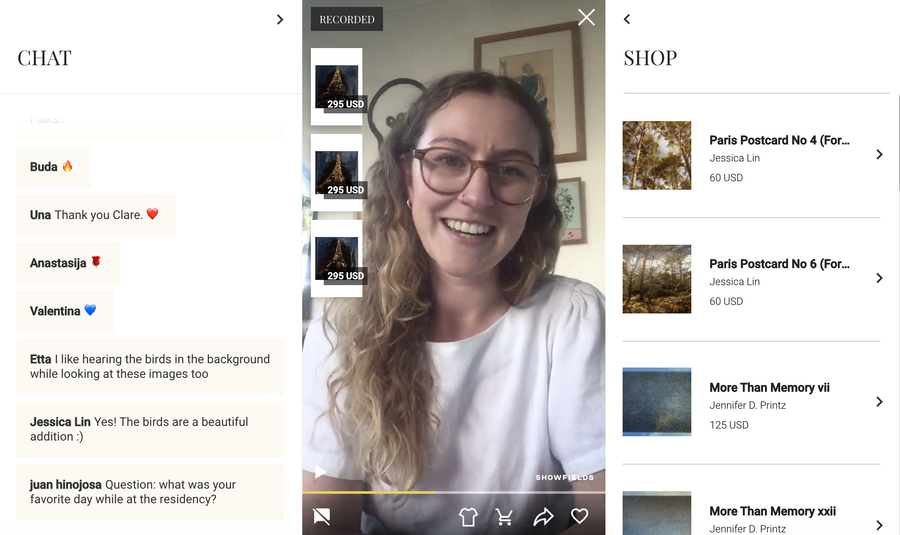Digital Innovation: How are brands leveraging Web & App?
We're exploring how brands are harnessing the power of digital channels to connect with consumers in new ways. First up, we take a look at the latest web and app innovations.


We're exploring how brands are harnessing the power of digital channels to connect with consumers in new ways. First up, we take a look at the latest web and app innovations.


With consumers spending more time at home than ever before, brands have faced a significant challenge. But over the past few months we’ve been excited to see businesses from a range of sectors proving that brand experiences can still engage, inspire, delight and excite, even in the most challenging of circumstances. What do those brands have in common? They’re all experimenting with digital tools, platforms and content in order to stay in touch with their audience.
Drawing inspiration from innovations both during and pre-pandemic, we’re taking a look at how brands have made and maintained meaningful connections with their customers across digital channels and discussing what this means for the post-COVID future.
In each part of this series, we’ll be covering different technologies. First up we have: Web and app.
With 84% of digital shifters revealing they aim to maintain some or all of their online shopping habits after the pandemic is over, web or app-based activity should be a key consideration for brands. And we don’t just mean an e-commerce site. Recent innovations in the web and app space are allowing brands to coordinate live events, tell their story on new platforms and blend their channels for the ultimate phygital shopping experience.

One major trend we’ve been noticing is the introduction of online platforms from distributors that allow individual brands to have a voice and form a more personal connection with their audience through a channel they don’t necessarily own.
In September, Amazon launched its Luxury Stores platform on its mobile app and partnered with Oscar de la Renta as the first high-end brand to have a presence. In the past year, Amazon customers have ordered over a billion fashion items on mobile alone - the new Luxury Stores feature is therefore a lucrative way for brands to be where their customers are already spending a lot of time and money. With the current set up, the partner brand is in control of inventory, selection, pricing and shipping, allowing them to make independent decisions and put their own spin on the customer experience. There’s also a 360° viewing option for certain items to help visualise fit and make the experience more personal. We’re intrigued to see which other brands announce partnerships in the coming months to take advantage of the latest step forward in the democratisation of luxury.
Fashion e-tailer Zalando has also launched a new brand platform initiative this autumn. Named ‘Brand Homes’, the new feature allows Zalando’s partners to become storytellers by curating their own content and collections for visitors to browse online, elevating their individual profile in a multi-brand environment. With over 80% of visits coming from mobile users, the initiative puts brands such as L’Oreal and North Face directly into the back pocket of consumers, allowing them to engage and connect wherever they are.

With the events industry around the world being one of the hardest hit thanks to the pandemic, brands have started to utilise the power of the web to host live events, talks and product drops to engage with their audience on a deeper level.
Self-dubbed ‘The Most Interesting Store in the World’, Showfields is leading the way when it comes to a blended physical and digital experience. Part-retailer and part-content curator, Showfields brings together the best art and commerce under one digital roof, with artists and brands hosting live talks, curations and masterclasses online. Visitors can also book a video chat with a Showfields storyteller to learn more about their partner brands. Whilst the retailer also has physical stores in New York and Miami (which are wonderfully experiential in their own right), their online platform is what’s really enabling them to offer dynamic and engaging experiences to their audience whilst they spend more time at home.
Streetwear curator NTWRK is hot on the heels of Showfields, launching shoppable shows across its online channels that feature the biggest names in street and pop culture. Customers are able to buy the latest streetwear, sneakers and collectibles handpicked by the NTWRK team, as well as connect with other enthusiasts attending each episode. The dynamic nature of web and app as a channel allows brands like NTWRK to be fast-moving and responsive, with the latest products dropping live at a pace that the digital consumer is happy to keep up with.

Online shopping has been a lifesaver for some, a dull and repetitive task for others. There’s something undeniably enjoyable in the ability to wander around, check sizes, or just see what grabs your eye. With virtual tours now becoming widely available in industries such as Property, retail brands are also adopting 3D visualisation tools to invite visitors inside their stores from the safety of their own homes.
Made.com has recreated its Amsterdam showroom as a 360° experience online, providing customers with lifestyle inspiration and the all-important ability to visualise furniture within a domestic setting. John Lewis & Partners has also taken a similar approach, launching their 2020 Christmas Shop as a 3D walkaround on their website. We would have loved to see this pushed one step further by introducing more motion - twinkling lights, or a classic Christmas movie playing on the TV screens would really elevate this into a more dynamic experience for the viewer. Or the virtual space could have been reimagined as an entirely digital world created from scratch, offering limitless discovery. But creative license aside, this 360° technology is really valuable to businesses that want to extend their in-store brand experience to those at home - and even more so if they enhance the e-commerce capabilities to allow an ‘Add to Basket’ feature within the platform without the need to redirect.

Despite the many barriers COVID has put up, it’s also helped break one down. The use of QR codes to complete everyday activities - from ordering food off a menu to checking into stores - has become the norm. Popular in Asia for 20 years, they’ve never gained traction in the UK until now - and adoption is happening at pace. With this new-found consumer acceptance, a number of opportunities have been unlocked for brands wanting to share information and experiences digitally.
Apple has recently launched App Clips, a feature that allows users to access brand content without the need to download any extra applications. G-Star is the first high street brand to adopt this tool, integrating it into their retail experience via QR codes inside their stores, but also on their windows. Visitors can scan the codes to launch G-Star app content on their phones, allowing them to order different sizes and colours for a seamless shopping experience, or complete the purchase later on their own terms.
The introduction of this technology could be a game changer for the phygital brand experience - by cutting out the download step and making app content immediately accessible, it removes a key barrier to engagement. The opportunities are endless - from enabling access to exclusive content such as audio shopping soundtracks or product sourcing e-books, to recommending complementary accessories or integrating a ‘like’ function, we’re excited to see how brands push this technology to create the most engaging and connected experiences for their audiences.

We’re excited by the recent innovation we’ve seen in this space. Digital should never be an isolated activity, but when done correctly and integrated as part of a total brand experience it can prove invaluable for brands as a way to build purposeful, inspiring and meaningful connections with customers, wherever they are.
Want to learn more about how digital services could transform your brand experience? Get in touch.

The first ever SXSW London took over Shoreditch this month, offering a wealth of inspiration and insights across tech, business and culture. We share our thinking into how it can return even bigger and better for 2026.

